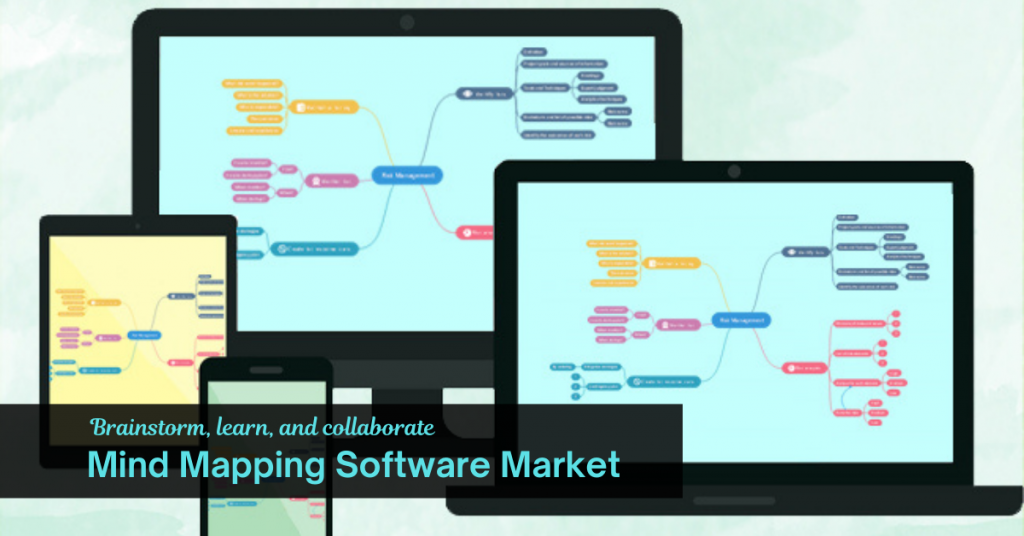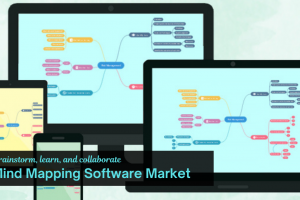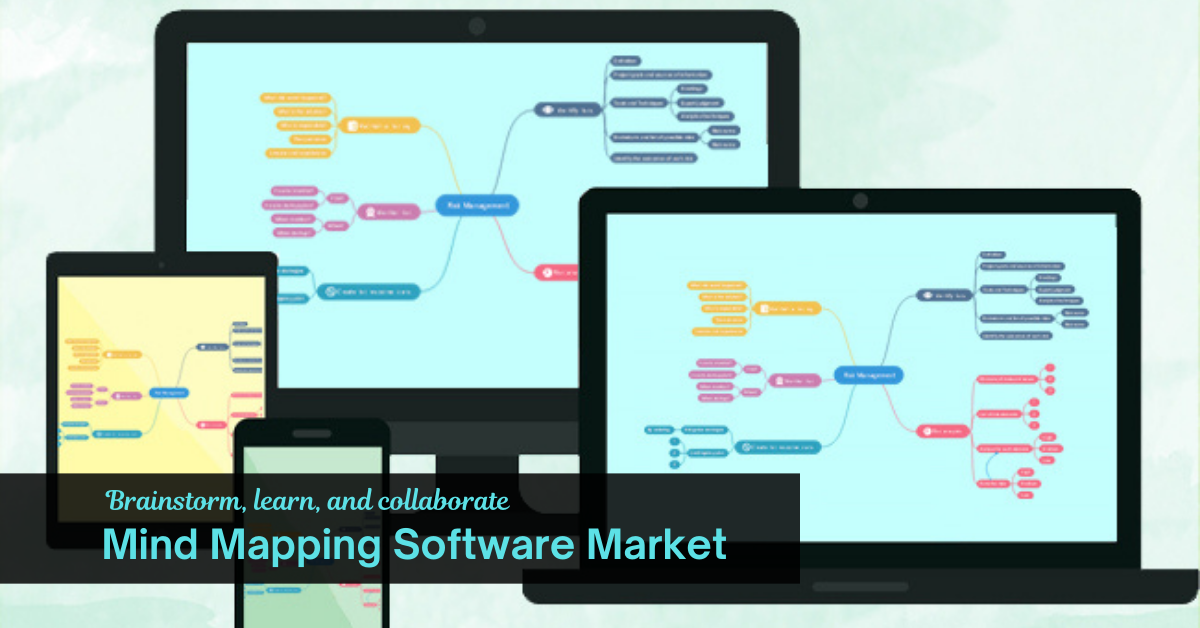
Market Overview
The Mind Mapping Software Market is experiencing exponential growth, with its value projected to rise from USD 1743 million in 2024 to USD 5258 million by 2032, registering a CAGR of 14.8% during the forecast period. This surge is a direct reflection of the market’s increasing importance across business, academic, and creative domains. As organizations and individuals grapple with information overload, visual thinking tools like mind mapping software are becoming essential for clarity, focus, and productivity. These tools transform scattered thoughts into structured visuals, enabling quicker insights and more strategic decisions.
With growing adoption across remote workforces, creative agencies, and EdTech platforms, demand is accelerating. Moreover, the increased use of mobile and cloud-based software makes these tools accessible on the go, aligning with modern work habits. Businesses are embedding them into collaborative workflows and innovation pipelines, boosting their value. Educational institutions are deploying them for adaptive learning, while entrepreneurs use them to brainstorm and pitch ideas visually. This cross-functional utility makes the market not only relevant but indispensable.
Read full report: https://www.credenceresearch.com/report/mind-mapping-software-market
Market Drivers
Digital Transformation Across Workflows
As digital transformation becomes a core objective for enterprises, visual planning tools like mind mapping software are being prioritized. They help teams simplify and visualize complex projects, making them easier to manage and monitor. By facilitating intuitive planning, these tools drive better alignment across departments. The shift from paper-based and linear documentation to interactive visual formats mirrors broader workplace evolution. Companies across industries are incorporating them into meetings, training modules, and decision-making processes. This trend is also reinforced by executive support for tools that enhance innovation and clarity.
Growing Demand for Cognitive Productivity Tools
Mind mapping tools cater to the growing appetite for cognitive enhancement applications. In a world flooded with data and distractions, tools that support structured thinking and mental clarity are in demand. Mind mapping offers a science-backed method to enhance creativity, memory retention, and problem-solving. This positions it uniquely between productivity and wellness software. Professionals increasingly seek out tools that improve mental flow and idea generation, especially during planning or brainstorming. The psychological appeal of mind mapping tools further strengthens their adoption across both personal and professional spheres.
Shift in Learning Preferences
Today’s learners favor interactive and visual engagement over traditional linear study methods. Mind mapping software is an ideal fit for this paradigm shift, offering a personalized and immersive approach to understanding concepts. Instructors use these tools to map course structures, while students create custom study plans. Educational platforms now embed mapping tools as part of their core features, allowing dynamic engagement. The approach supports both group collaboration and individual learning paths. This evolution is especially relevant for online learners, who seek tools that adapt to their pace and learning style.
Cloud and Mobile Accessibility
The widespread availability of cloud-based mind mapping tools has significantly lowered adoption barriers. Users can access their maps from any device, collaborate in real-time, and store data securely online. This convenience makes it easy for both individuals and teams to use mind mapping tools on the move. Mobile optimization has become a standard feature, with apps allowing sketching, voice notes, and offline access. These developments align with the expectations of today’s on-the-go users who rely on smartphones and tablets as primary work tools. The enhanced user experience boosts daily usage and broadens the software’s appeal.
Market Challenges
Fragmented User Needs
The mind mapping market caters to a wide array of user groups—from students to CEOs—each with vastly different requirements. This fragmentation makes it challenging for software providers to design one-size-fits-all solutions. A tool built for enterprise-level planning may overwhelm a student looking for simple note-taking. Similarly, minimal tools may lack the depth needed by project managers or product designers. Bridging this gap while keeping the UI intuitive is a complex task. Many vendors struggle to balance feature depth with ease of use.
Resistance to Software Adoption in Traditional Settings
Despite digital trends, some industries and educational institutions still prefer traditional pen-and-paper or whiteboard brainstorming. This resistance stems from concerns around learning curves, cost, or simple inertia. In such environments, convincing stakeholders to switch to mind mapping tools can be difficult. This slows market penetration, especially in regions where digital transformation is still emerging. Additionally, decision-makers often underestimate the value of visualization tools compared to more quantifiable software. Overcoming this bias requires robust marketing and training efforts.
Compatibility and Integration Gaps
Not all mind mapping tools integrate smoothly with existing enterprise ecosystems. Incompatibility with document management systems, legacy software, or data visualization platforms can cause friction. Users prefer tools that blend into their workflow rather than adding another silo. When seamless integration isn’t available, adoption is delayed or abandoned. Additionally, synchronization across devices or platforms may still face lags or inconsistencies. This affects the reliability of cloud-based collaboration, especially for remote teams. Vendors need to prioritize broad and stable interoperability to remain competitive.
Shortage of Localized Solutions
Although the market is global, most platforms remain heavily English-centric. This limits usability in non-English speaking regions or among users with lower language proficiency. Localization goes beyond translation—it includes adapting templates, layouts, and help centers to suit cultural and educational contexts. Without this, mind mapping tools may be seen as inaccessible or too complex. Vendors who ignore localization miss out on potentially lucrative markets across Asia, Latin America, and Africa. Investing in multi-language support and regional partnerships is crucial for scale.
Market Opportunity
Strategic Role in Design Thinking
Mind mapping plays a critical role in design thinking processes, especially in product development and innovation strategy. As more businesses embrace customer-centric innovation models, tools that enable visual problem-solving gain value. Mind maps help structure user journeys, identify gaps, and brainstorm solutions. By embedding these tools into design workflows, teams can speed up ideation and reduce time to market. This creates a lucrative space for vendors targeting creative professionals and R&D departments. Tailored design-thinking toolkits can become a new product vertical.
Corporate Training and Onboarding
Companies are investing in structured and engaging onboarding experiences, and mind mapping can enhance this process. From visual SOPs to training paths, maps offer new employees a clear and interactive guide to company structure and tasks. HR teams can use these tools to outline processes, benefits, and timelines. Mind maps improve knowledge retention and allow personalization based on job roles. Vendors offering corporate onboarding templates can target the lucrative enterprise training market. As remote hiring grows, digital training tools become even more essential.
SaaS Subscription Expansion
The success of SaaS pricing in other software sectors is opening doors for similar models in mind mapping. Subscriptions allow vendors to offer updates, support, and premium features in a cost-effective manner. Users benefit from lower upfront costs, while businesses enjoy recurring revenue. The growing acceptance of monthly or annual plans across sectors like education, SMEs, and freelancers will fuel SaaS expansion. Bundling features or providing tiered access encourages user upgrades. This monetization model will be key to long-term profitability for new entrants and existing players alike.
Gamification and Engagement Tools
Incorporating gamification into mind mapping tools offers a compelling way to increase engagement. Features such as progress tracking, badges, or collaborative challenges can boost daily usage and retention. Educational apps, in particular, benefit from such elements as they motivate learners. Similarly, corporate teams can use gamified brainstorming sessions for creativity and team-building. These features open a niche for developers focusing on behavior-driven design. Gamification also aids in onboarding new users by making the learning curve less intimidating and more rewarding.
Market Segmentation
By Deployment Type
- Cloud-Based
- On-Premises
By User Type
- Individuals
- Enterprises
- Educational Institutions
By Purpose
- Brainstorming
- Project Planning
- Information Structuring
- Strategic Analysis
By Features
- Real-Time Collaboration
- Integration with Third-Party Tools
- Task Management
- Templates and Customization
- AI-Powered Recommendations
By Pricing Model
- Subscription-Based
- One-Time License
- Freemium
By Region
- North America (U.S., Canada, Mexico)
- Europe (UK, France, Germany, Italy, Spain, Russia, Belgium, Netherlands, Austria, Sweden, Poland, Denmark, Switzerland, Rest of Europe)
- Asia Pacific (China, Japan, South Korea, India, Thailand, Indonesia, Vietnam, Malaysia, Philippines, Taiwan, Rest of Asia Pacific)
- Latin America (Brazil, Argentina, Peru, Chile, Colombia, Rest of Latin America)
- Middle East & Africa (GCC Countries, South Africa, Rest of the Middle East and Africa)
Regional Analysis
North America leads the global mind mapping software market, driven by early technology adoption and a strong culture of innovation in sectors like education, IT, and consulting. The U.S. in particular is a hotbed for productivity and creative software adoption, with startups and large enterprises alike integrating mind mapping tools into daily operations. Canada is also seeing increased demand in academic institutions and healthcare, where visual planning aids knowledge sharing. High internet penetration and strong digital literacy enable widespread use across age groups and professions.
In Europe, markets such as Germany, the UK, and the Netherlands are rapidly expanding their use of mind mapping software. The region’s emphasis on structured thinking, innovation in education, and collaborative research aligns perfectly with the capabilities of these tools. Regulatory frameworks like GDPR also drive the need for secure and compliant platforms, creating opportunities for vendors offering robust data protection. Educational institutions across Europe are increasingly embedding these tools into their digital classrooms and learning management systems.
Asia Pacific is the fastest-growing regional segment, fueled by rapid digitization, large student populations, and startup growth. Countries like India, China, and South Korea are adopting EdTech and productivity platforms at scale. Affordable internet and smartphone usage enable broad access, especially for cloud-based mobile solutions. Local language support is essential here, as users demand intuitive interfaces and culturally adapted features. Government initiatives to promote digital literacy in education and small businesses further fuel demand.
Latin America and the Middle East & Africa are emerging markets with strong growth potential. Brazil, Chile, South Africa, and the UAE are witnessing rising adoption in both corporate and education sectors. These regions face challenges such as uneven infrastructure and digital skill gaps, but vendors focusing on mobile-first, low-bandwidth solutions are gaining ground. Investment in remote learning and digital upskilling programs creates fertile ground for expansion. Over time, these regions are expected to contribute significantly to global revenue.
Top Companies
- Coggle
- Goalton
- OpenGenius
- XMind
- Seavus Group
- Expert Software Applications
- MeisterLabs
- Inspiration Software
- MatchWare
- TheBrain Technologies
Future Outlook
- AI-generated maps from meeting transcripts will become a standard feature.
- Voice-enabled mapping will increase accessibility for differently-abled users.
- Demand for multilingual platforms will reshape localization priorities.
- Templates tailored for industry verticals will drive enterprise adoption.
- Collaborative learning modules will integrate mapping tools into digital curricula.
- Gamification and UX upgrades will increase student and user engagement.
- 3D and spatial mind maps will gain popularity in design and architecture.
- Integration with virtual whiteboards will enable hybrid team ideation.
- Open-source options will rise, offering community-driven customization.
- Sustainability and eco-conscious startups will favor digital mapping over print tools.
Read full report: https://www.credenceresearch.com/report/mind-mapping-software-market









